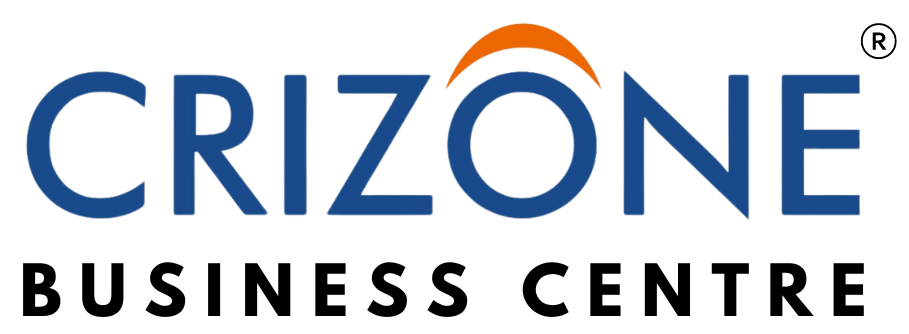· Vimal Hari · Business · 7 min read
6 Strategies to Boost Employee Performance in the Workplace
Discover practical, research-backed approaches to enhance productivity and employee satisfaction in your organization.

Introduction: The Performance Imperative in Today’s Competitive Landscape
In today’s fast-paced business environment, maximizing employee performance isn’t just a goal—it’s a necessity for survival and growth. Organizations across Chennai and beyond are recognizing that their greatest competitive advantage lies not in technology or capital, but in their human resources. When employees perform at their peak potential, businesses experience enhanced productivity, improved customer satisfaction, greater innovation, and ultimately, stronger financial results. However, unlocking this potential requires strategic, intentional approaches rather than quick fixes or temporary motivational tactics.
1. Create a Culture of Recognition and Appreciation
The Recognition Gap: Studies consistently show that feeling undervalued is a primary reason employees disengage. According to Gallup research, only one in three workers received recognition for good work in the past week. This recognition deficit significantly impacts motivation and commitment.
Implement a Multi-Faceted Recognition System: Develop both formal and informal recognition programs. Formal programs might include employee of the month awards, achievement certificates, or performance-based bonuses. Equally important are day-to-day informal acknowledgments—a sincere “thank you,” public praise during team meetings, or a personalized note of appreciation.
Peer-to-Peer Recognition: Encourage team members to acknowledge each other’s contributions. This builds a collaborative culture where appreciation flows in all directions, not just from management. Simple digital platforms or even a dedicated Slack channel can facilitate this peer recognition.
Real-World Success: A mid-sized IT services company in Chennai implemented a comprehensive recognition program that included quarterly awards, instant appreciation tokens, and a digital platform for peer recognition. Within six months, they observed a 24% increase in employee satisfaction scores and a 17% reduction in turnover rate.
2. Invest in Continuous Learning and Development
The Skills Evolution Imperative: In today’s rapidly changing business landscape, skills become obsolete faster than ever before. Organizations that prioritize continuous learning create adaptable workforces that remain competitive and engaged.
Personalized Development Plans: Work with each employee to create individual development plans aligned with both organizational needs and personal career aspirations. These should include a mix of formal training, stretch assignments, mentorship opportunities, and self-directed learning.
Learning Beyond Technical Skills: While technical training is crucial, don’t neglect soft skills development. Communication, critical thinking, emotional intelligence, and leadership capabilities often make the difference between good and exceptional performers.
Create Learning Opportunities: Consider implementing lunch-and-learn sessions, internal knowledge-sharing forums, subsidized online courses, professional certification programs, and partnerships with educational institutions. The key is providing varied learning pathways to accommodate different learning styles and needs.
Measure and Reward Growth: Track skills development and recognize employees who demonstrate commitment to learning. This sends a powerful message about your organization’s values and encourages continuous improvement.
3. Provide Clear Goals and Regular Feedback
The Power of Goal Clarity: Employees who clearly understand what’s expected of them and how their work contributes to larger organizational objectives are 2.8 times more likely to be highly engaged, according to research by Quantum Workplace.
Implement Effective Goal-Setting: Use the SMART framework (Specific, Measurable, Achievable, Relevant, Time-bound) when establishing performance objectives. Ensure goals cascade from organizational priorities to team and individual levels, creating a clear line of sight between daily activities and company mission.
Beyond Annual Reviews: Replace or supplement traditional annual performance reviews with regular check-ins. These more frequent conversations allow for timely course correction, celebration of wins, and adaptation to changing business needs.
Feedback Best Practices: Train managers to deliver balanced, specific feedback that focuses on behaviors rather than personality traits. Constructive feedback should always include concrete examples and actionable suggestions for improvement.
Two-Way Communication: Encourage employees to provide upward feedback as well. This creates psychological safety and demonstrates that performance improvement is a collaborative effort, not just a top-down directive.
4. Foster Autonomy and Ownership
The Autonomy-Performance Connection: Research from the University of Birmingham found that employees with higher levels of autonomy reported significantly higher job satisfaction and engagement, which directly correlates with improved performance.
Delegate with Purpose: Thoughtful delegation isn’t about offloading tasks—it’s about providing opportunities for growth and demonstrating trust. When delegating, clearly communicate expected outcomes while allowing flexibility in how the work gets done.
Decision-Making Authority: Push decision-making down to the lowest appropriate level in your organization. This speeds up processes and empowers employees to take ownership of their work.
Flexible Work Arrangements: Where possible, offer flexibility in work hours, location, or project selection. This autonomy demonstrates respect for employees’ judgment and acknowledges their diverse needs and working styles.
Encourage Calculated Risk-Taking: Create a safe environment for experimentation by celebrating innovative thinking even when initiatives don’t succeed. This encourages proactive problem-solving and continuous improvement.
Case Study: A Chennai-based software development firm implemented self-managed developer teams with full autonomy over project execution. After transitioning to this model, they saw a 30% reduction in development time and significantly higher client satisfaction ratings.
5. Prioritize Employee Wellbeing
The Wellbeing-Performance Link: Research published in the Journal of Occupational and Environmental Medicine shows that employees with high wellbeing are 31% more productive and take 41% less sick leave than those with poor wellbeing.
Holistic Approach: Effective wellbeing initiatives address physical, mental, and emotional health. This might include ergonomic workstations, stress management workshops, mental health resources, and financial wellness education.
Prevent Burnout: Recognize warning signs of burnout and take proactive steps to address it. Encourage proper work-life boundaries, regular breaks, and the use of vacation time. Leaders should model these behaviors themselves.
Create Supportive Social Connections: Foster a sense of belonging through team-building activities, employee resource groups, and opportunities for meaningful social interaction. Strong workplace relationships serve as a buffer against stress and enhance collaboration.
Measure and Adapt: Regularly assess wellbeing through surveys, focus groups, or health risk assessments. Use this data to refine your approach and demonstrate commitment to employee health.
ROI of Wellbeing: Research by Deloitte found that wellness programs deliver an average return of ₹2.7 for every ₹1 invested through reduced absenteeism, higher productivity, and lower healthcare costs.
6. Align Work with Purpose and Meaning
The Purpose Imperative: According to McKinsey research, employees who find purpose in their work are four times more engaged, significantly more productive, and 50% more likely to stay with their organization.
Connect Individual Roles to Organizational Mission: Help employees understand how their specific contributions advance the company’s mission and create value for customers or society. This connection transforms routine tasks into meaningful work.
Share Success Stories: Regularly communicate examples of how the organization’s work has positively impacted customers, communities, or other stakeholders. These concrete illustrations reinforce purpose more effectively than abstract mission statements.
Values in Action: Ensure that organizational values are more than wall decorations by recognizing and celebrating employees who exemplify these principles in their daily work.
Facilitate Job Crafting: Where possible, allow employees to shape aspects of their roles to better align with their strengths, interests, and values. Even small adjustments can significantly increase engagement and performance.
Purpose Beyond Profit: Support community involvement and corporate social responsibility initiatives that allow employees to contribute to causes they care about. This strengthens their connection to the organization’s broader purpose.
Conclusion: The Integrated Approach to Performance Excellence
Boosting employee performance isn’t achieved through isolated initiatives but through an integrated approach that addresses multiple dimensions of the employee experience. By implementing these six strategies—creating a culture of recognition, investing in development, providing clear goals and feedback, fostering autonomy, prioritizing wellbeing, and aligning work with purpose—organizations can create an environment where exceptional performance becomes not just possible but inevitable.
The most successful companies recognize that performance improvement is a continuous journey rather than a destination. It requires ongoing commitment, regular assessment, and willingness to adapt approaches based on changing needs and feedback.
For Chennai businesses facing intense competition for talent and market share, these strategies offer a blueprint for building a high-performance culture that attracts top talent, enhances productivity, and drives sustainable growth. The investment in your people isn’t just good for them—it’s essential for your organization’s long-term success.




